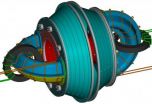(Press-News.org) Despite homeland security improvements since September 11, 2001, subway and rail commuters face higher risks of falling victim to terrorists and mass violence than frequent flyers or those engaged in virtually any other activity. And while successful criminal and terrorist acts against aviation have fallen sharply, those against subways and commuter trains have surged. These are among the findings of a new study by Arnold Barnett, George Eastman Professor of Management Science at MIT's Sloan School of Management, who will deliver a presentation titled "Has Terror Gone to Ground?" at the INFORMS Annual Meeting in Phoenix on October 15.
Barnett found that during the period 1982-91 deliberate acts of malice caused 1,327 deaths worldwide among air travelers, but none on subways/commuter trains. But between 2002-11, the pattern reversed: there were 203 aviation deaths and 804 among subway/rail commuters.
Further statistics depict the implications of this reversal. A recent subway/rail commuter in the Developed World has faced twice the annual death risk of a frequent flyer, while the risk per mile traveled by subway/commuter rail was ten times as high as by air. Criminal and terrorist acts account for about 8% of the overall death risk of air travel, but they account for 88% of the mortality risk on subways and commuter railroads.
Barnett contends that this reversal does not imply that aviation security measures are less necessary; instead, it might suggest that the success of such measures has displaced criminal/terrorist activity to other venues like commuter rail systems.
Barnett paid special attention to the events on 9/11. He noted that the number of air passengers killed on that day—at 232—was similar to the death tolls in later bombings on the commuter rail systems of Madrid and Mumbai, and in an arson attack on a South Korean subway. What made 9/11 singularly horrible was the enormous death toll on the ground (2,700 killed).
Subsequent measures to secure airline cockpits may be the reason that there have been no further attacks that used commercial airlines as weapons. Indeed, Barnett notes, the most publicized of the recent air-terror plots—the shoe bomber, the underwear bomber, the liquid-explosives plot, the ink-cartridge bombs—have reverted to trying to blow up airplanes, the primary tactic that was used before 9/11 with greater success.
Barnett notes that even among subway/rail commuters, the risk of falling victim to terrorism or mass violence was very low in the last decade, at approximately 1 in 2 million per year. But because successful terrorism has such far-reaching consequences, Barnett argues, the prevention of rail terrorism warrants high priority. Stopping attackers once they reach stations and trains has proved difficult, so the most realistic way to prevent attacks might be to uncover and thwart terror plots at earlier stages. It was good intelligence work that averted a planned 2009 attack on the New York subway, not security measures at Times Square or Grand Central Terminal.
The INFORMS annual meeting will take place in Phoenix from Sunday, October 15-Wednesday, October 17. Over 4,000 academics and professionals are scheduled to attend the conference.
INFORMATION:
About INFORMS
The Institute for Operations Research and the Management Sciences (INFORMS®) is the leading professional association for professionals in advanced analytics. INFORMS is an international scientific society with 10,000 members, including Nobel Prize laureates, dedicated to applying scientific methods to help improve decision-making, management, and operations. Members of INFORMS work in business, government, and academia. They are represented in fields as diverse as airlines, health care, law enforcement, the military, financial engineering, and telecommunications. INFORMS serves the scientific and professional needs of operations research analysts, experts in analytics, consultants, scientists, students, educators, and managers, as well as their institutions, by publishing a variety of journals that describe the latest research in operations research. Further information about INFORMS, analytics, and operations research is at www.informs.org.
Terrorism risk greatest for subway/rail commuters, says MIT paper at INFORMS conference
2012-10-12
ELSE PRESS RELEASES FROM THIS DATE:
Antibiotic resistance a growing concern with urinary tract infection
2012-10-12
CORVALLIS, Ore. – As a result of concerns about antibiotic resistance, doctors in the United States are increasingly prescribing newer, more costly and more powerful antibiotics to treat urinary tract infections, one of the most common illnesses in women.
New research at Oregon State University suggests that the more powerful medications are used more frequently than necessary, and they recommend that doctors and patients discuss the issues involved with antibiotic therapy – and only use the stronger drugs if really neeeded.
Urinary tract infections are some of the ...
Earth sunblock only needed if planet warms easily
2012-10-12
RICHLAND, Wash. -- An increasing number of scientists are studying ways to temporarily reduce the amount of sunlight reaching the earth to potentially stave off some of the worst effects of climate change. Because these sunlight reduction methods would only temporarily reduce temperatures, do nothing for the health of the oceans and affect different regions unevenly, researchers do not see it as a permanent fix. Most theoretical studies have examined this strategy by itself, in the absence of looking at simultaneous attempts to reduce emissions.
Now, a new computer analysis ...
Engineered flies spill secret of seizures
2012-10-12
VIDEO:
Fruit flies with a genetic tendency toward fever-induced seizures (top) are the first to stop moving freely and are swept aside by a gentle air current as the temperature rises....
Click here for more information.
PROVIDENCE, R.I. [Brown University] — In a newly reported set of experiments that show the value of a particularly precise but difficult genetic engineering technique, researchers at Brown University and the University of California–Irvine have created a Drosophila ...
Researchers work across fields to uncover information about hadrosaur teeth
2012-10-12
GAINESVILLE, Fla. — An unusual collaboration between researchers in two disparate fields resulted in a new discovery about the teeth of 65-million-year-old dinosaurs.
With the help of University of Florida mechanical engineering professor W. Gregory Sawyer and UF postdoctoral researcher Brandon Krick, Florida State University paleobiologist Gregory Erickson determined the teeth of hadrosaurs — an herbivore from the late Cretaceous period — had six tissues in their teeth instead of two. The results were published in the journal Science Oct. 5.
"When something has been ...
Notre Dame researcher helps make Sudoku puzzles less puzzling
2012-10-12
For anyone who has ever struggled while attempting to solve a Sudoku puzzle, University of Notre Dame researcher Zoltan Toroczkai and Notre Dame postdoctoral researcher Maria Ercsey-Ravaz are riding to the rescue. They can not only explain why some Sudoku puzzles are harder than others, they have also developed a mathematical algorithm that solves Sudoku puzzles very quickly, without any guessing or backtracking.
Toroczkai and Ravaz of Romania's Babes-Boylai University began studying Sudoku as part of their research into the theory of optimization and computational complexity. ...
Mug handles could help hot plasma give lower-cost, controllable fusion energy
2012-10-12
Researchers around the world are working on an efficient, reliable way to contain the plasma used in fusion reactors, potentially bringing down the cost of this promising but technically elusive energy source. A new finding from the University of Washington could help contain and stabilize the plasma using as little as 1 percent of the energy required by current methods.
"All of a sudden the current energy goes from being almost too much to almost negligible," said lead author Thomas Jarboe, a UW professor of aeronautics and astronautics. He presents the findings this ...
More than just 'zoning out' -- Exploring the cognitive processes behind mind wandering
2012-10-12
It happens innocently enough: One minute you're sitting at your desk, working on a report, and the next minute you're thinking about how you probably need to do laundry and that you want to try the new restaurant down the street. Mind wandering is a frequent and common occurrence. And while mind wandering in certain situations – in class, for example – can be counterproductive, some research suggests that mind wandering isn't necessarily a bad thing.
New research published in the journals of the Association for Psychological Science explores mind wandering in various ...
Duke Medicine news -- Anti-cancer drug fights immune reaction in some infants with Pompe disease
2012-10-12
DURHAM, N.C. – Adding a third anti-cancer agent to a current drug cocktail appears to have contributed to dramatic improvement in three infants with the most severe form of Pompe disease -- a rare, often-fatal genetic disorder characterized by low or no production of an enzyme crucial to survival.
Duke researchers previously pioneered the development of the first effective treatment for Pompe disease via enzyme replacement therapy (ERT). ERT relies on a manufactured enzyme/protein to act as a substitute for the enzyme known to be lacking in patients with a particular disease. ...
New studies reveal connections between animals' microbial communities and behavior
2012-10-12
Athens, Ga. – New research is revealing surprising connections between animal microbiomes—the communities of microbes that live inside animals' bodies—and animal behavior, according to a paper by University of Georgia ecologist Vanessa O. Ezenwa and her colleagues. The article, just published in the Perspectives section of the journal Science, reviews recent developments in this emerging research area and offers questions for future investigation.
The paper grew out of a National Science Foundation-sponsored workshop on new ways to approach the study of animal behavior. ...
Enzyme triggers cell death in heart attack
2012-10-12
University of Iowa researchers have previously shown that an enzyme called CaM kinase II plays a pivotal role in the death of heart cells following a heart attack or other conditions that damage or stress heart muscle. Loss of beating heart cells is generally permanent and leads to heart failure, a serious, debilitating condition that affects 5.8 million people in the United States.
Now the UI team, led by Mark Anderson, M.D., Ph.D., professor and head of internal medicine at the UI Carver College of Medicine, has honed in on how CaM kinase II triggers heart cell death ...


